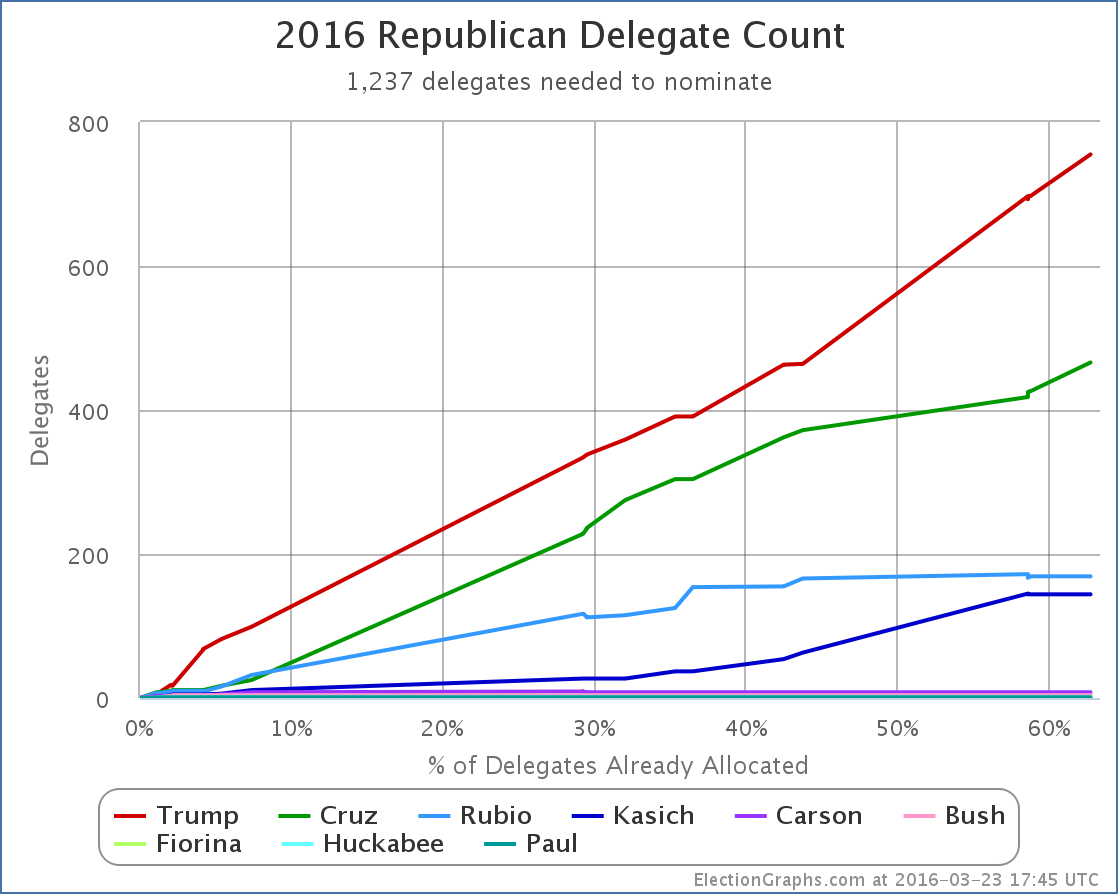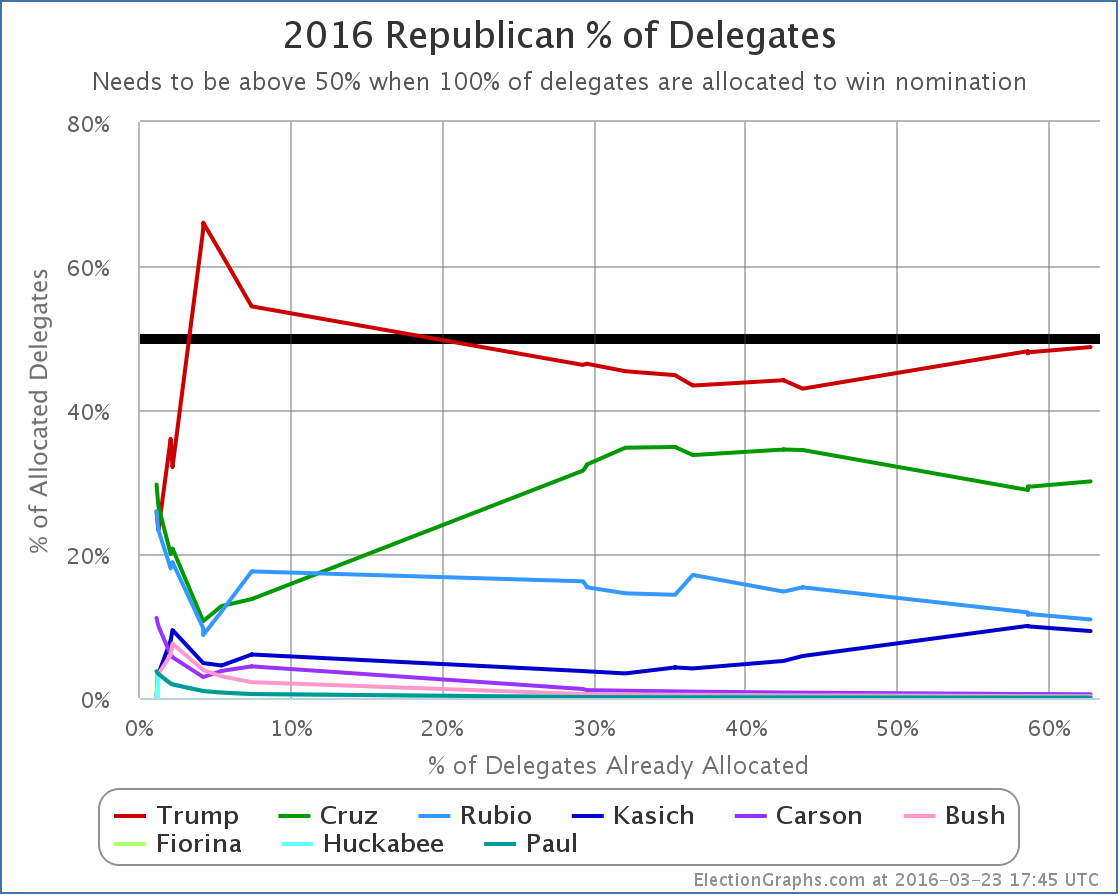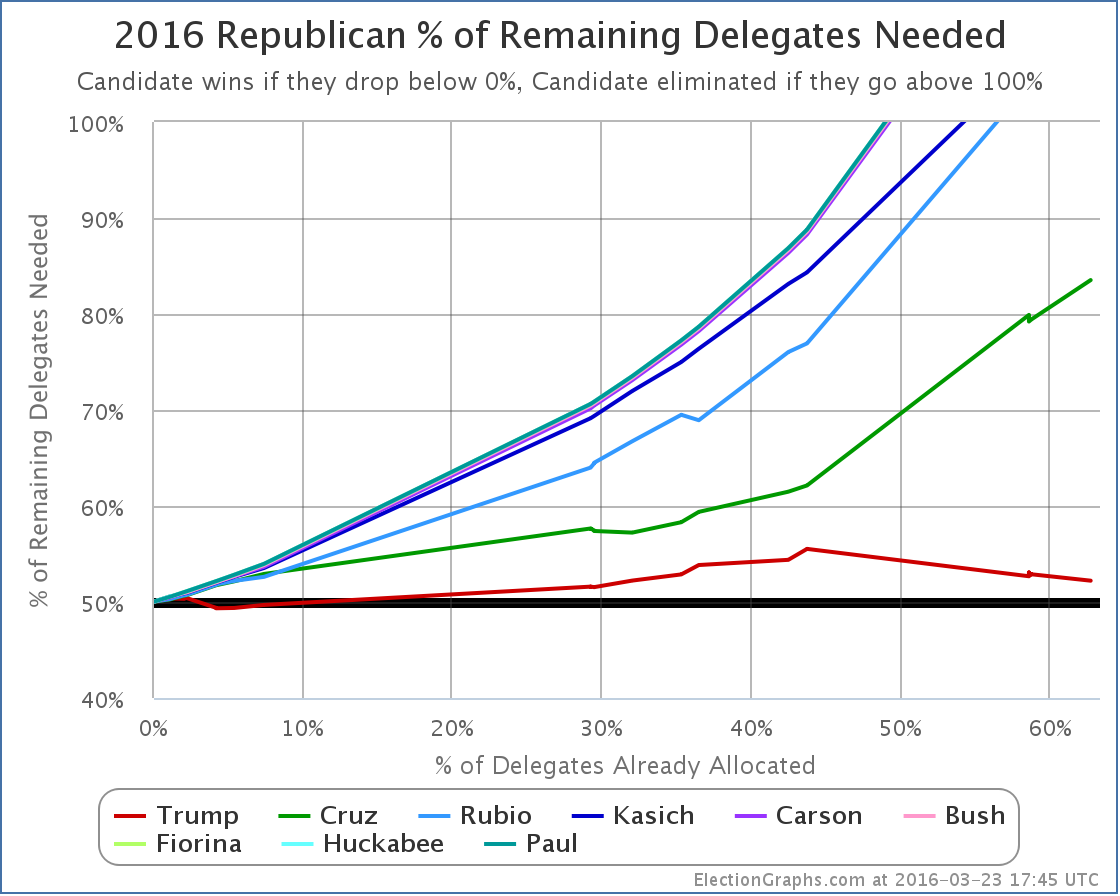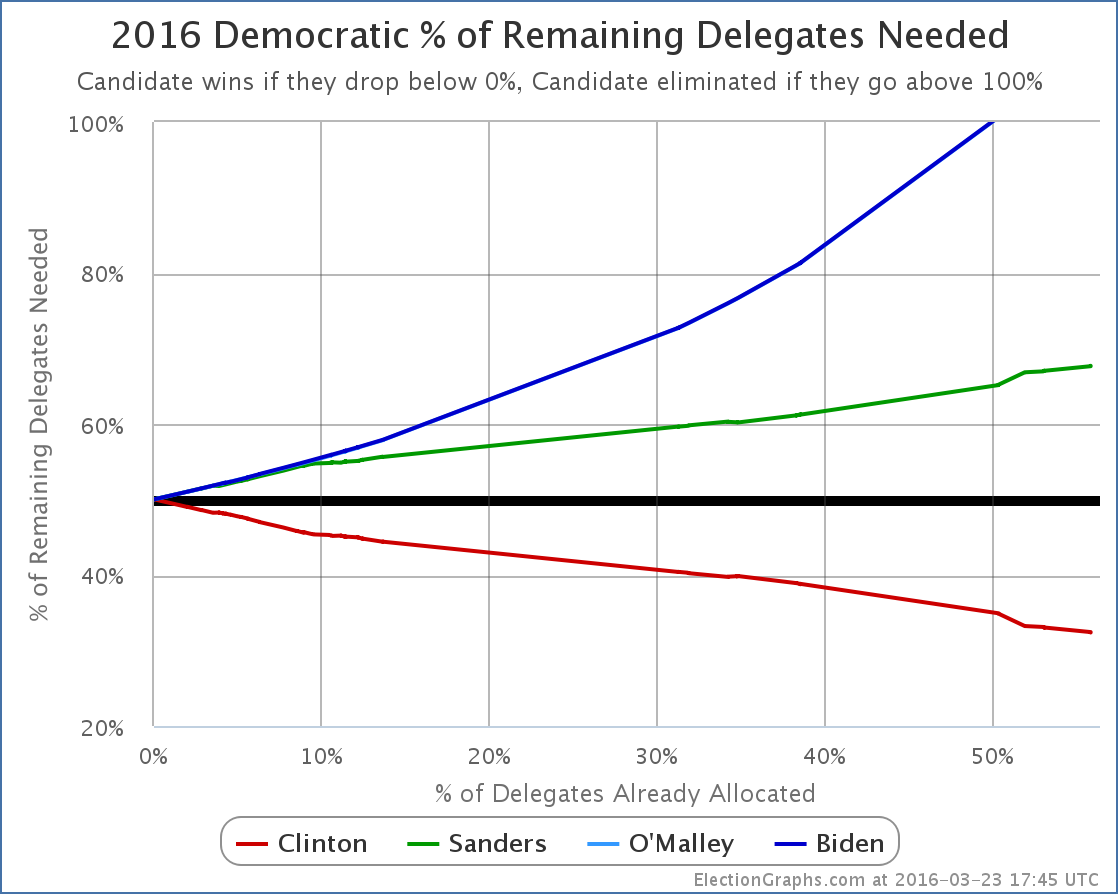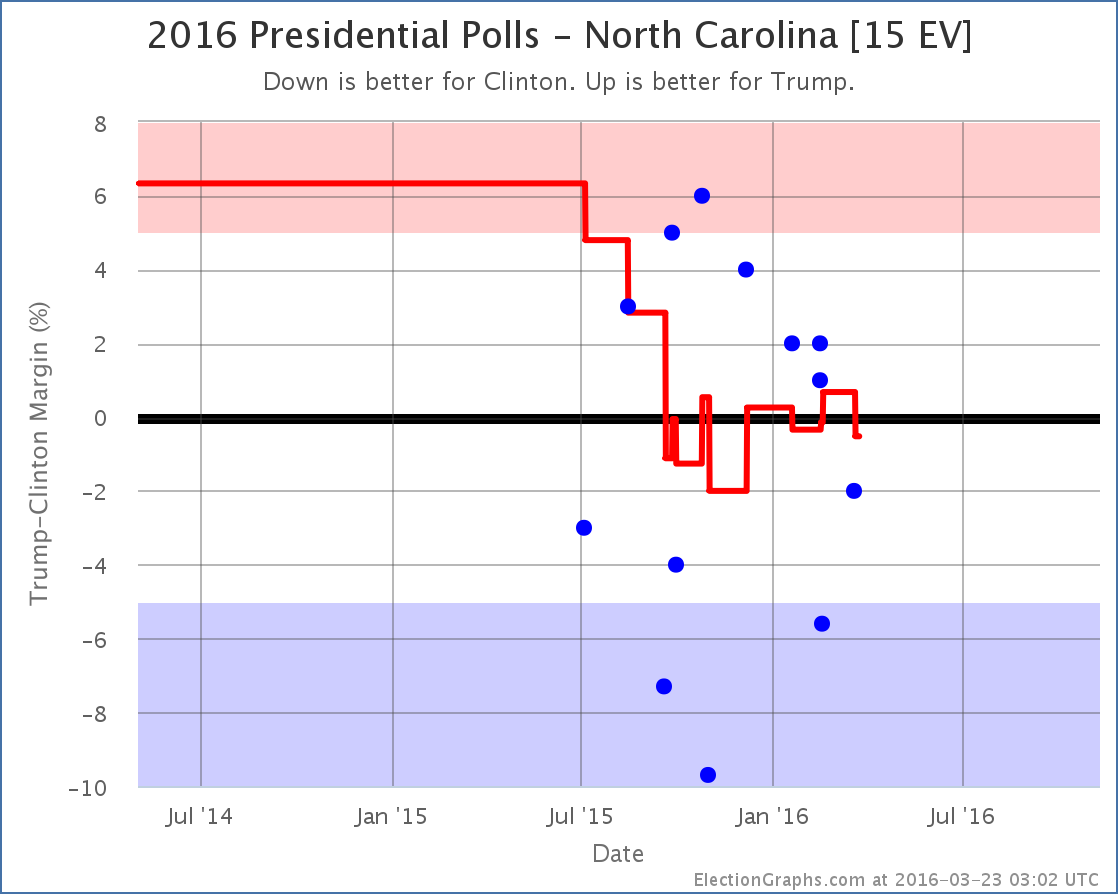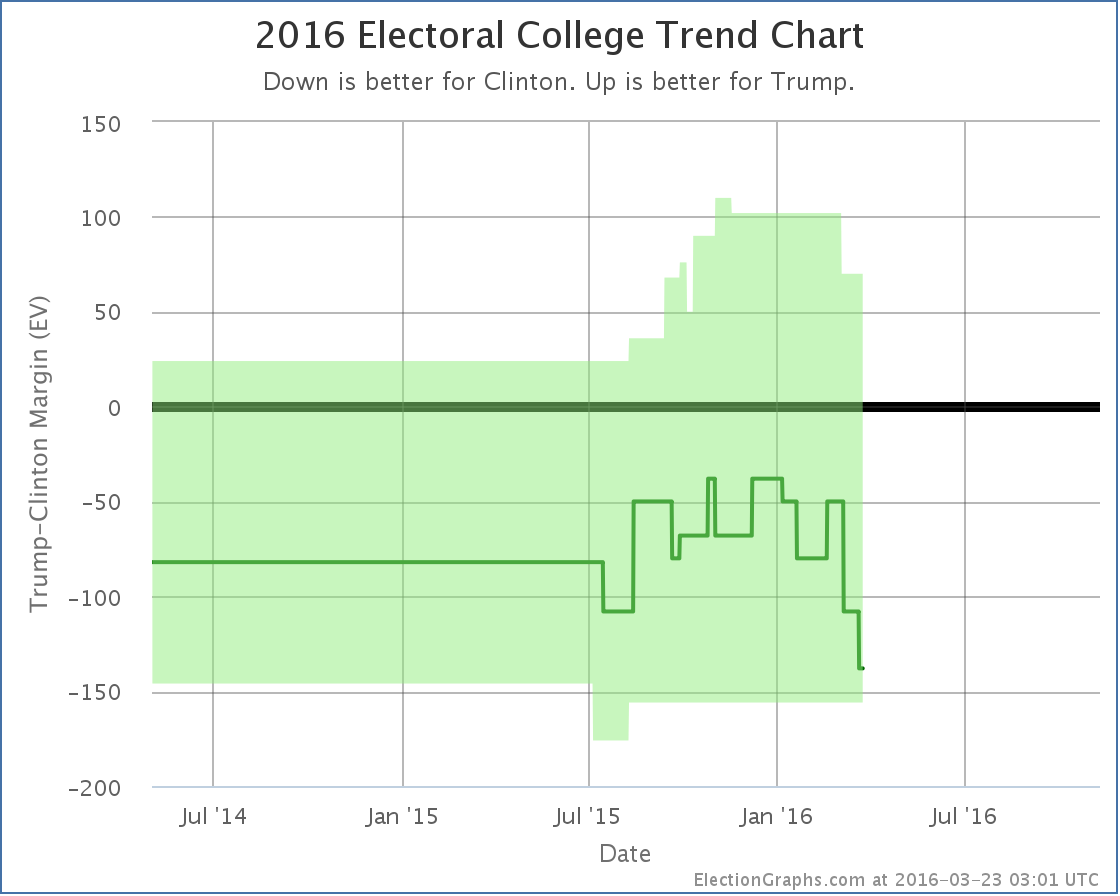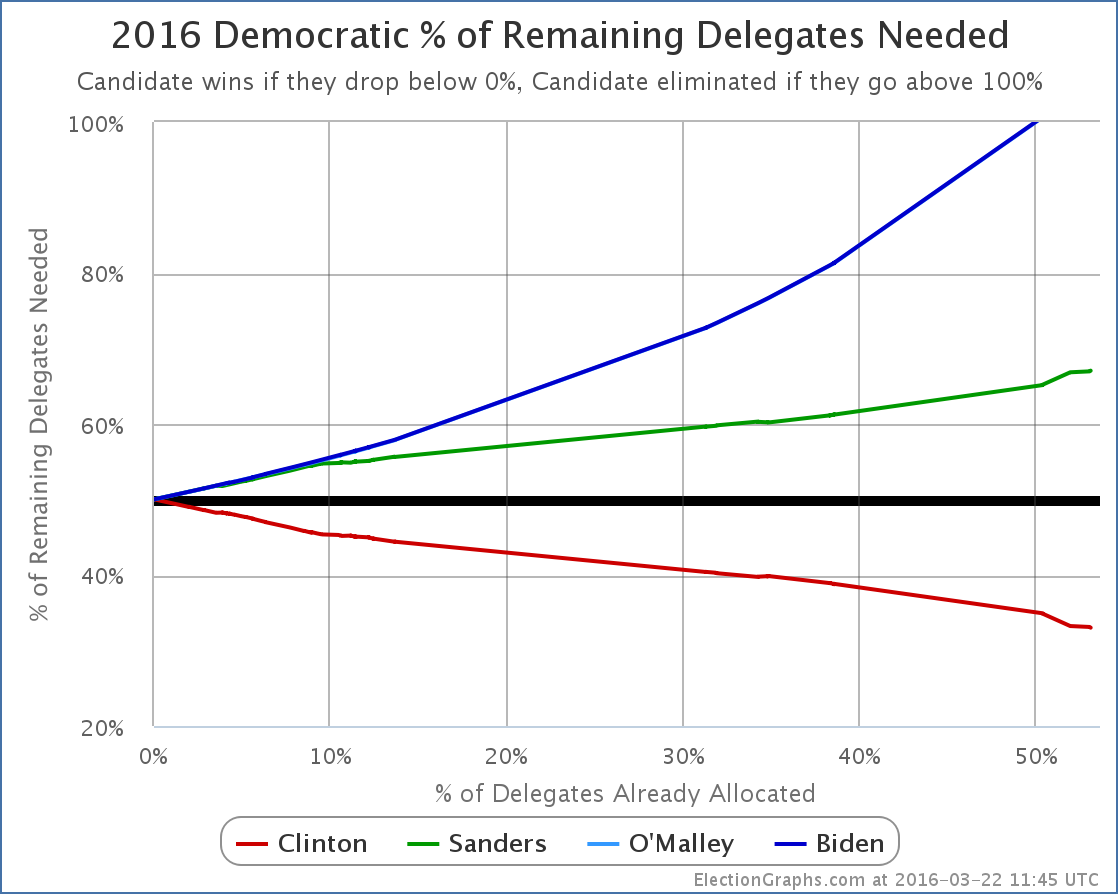When I did my last update there hadn’t been any recent polls in either Arizona or Utah, but the results there ended up matching pretty well with the results of the few polls that came out since then. Namely, Trump won Arizona which was straight up winner take all, and Cruz got over 50% in Utah, so he got all of the delegates there.
So the net for the night was Trump +58, Cruz +40.
Adding in other delegate adjustments since the March 15th results we have a net change of:
Trump +62, Cruz +43, Rubio -3
So effectively, Trump got 60.78% of the delegates since the last update. He only needed 53.07% to improve his position.
So what does this look like?
The raw delegate count is now Trump 755, Cruz 466, Rubio 169, Kasich 144, Carson 8, Bush 4, Fiorina 1, Huckabee 1, Paul 1
Trump’s pace of delegate accumulation actually looks like it has accelerated, while everybody else has slowed down.
But the raw delegate counts are not the right thing to look at.
In percentages of the delegates so far, both Trump and Cruz improved. But of course Cruz is nowhere near the 50% line. Trump meanwhile is now at 48.74%. He doesn’t have a majority. Close. Very close. But not quite.
But % of delegates so far isn’t the right thing to look at either.
This is the real graph to watch. The percentage of the remaining delegates that Trump needs to win in order to get to the convention with a majority of delegates. This has been dropping in the last couple of contests.
Trump now needs 52.22% of the remaining delegates to win the nomination outright.
Now, some of those “remaining delegates” are 18 delegates who have already been selected as officially “uncommitted” delegates, and there will be more uncommitted delegates coming out of some of the states that have yet to vote. Probably a few dozen to as many as 100. These delegates are essentially like the Democratic superdelegates in that they can vote however they feel like and are not bound to the results of any primaries or caucuses.
If you wanted to calculate the percentage Trump would need without uncommitted delegates, it would be higher. But just like superdelegates are part of the process on the Democratic side, uncommitted delegates are part of the process on the Republican side, and to get a fair picture you need to include them.
You just have to realize that winning not only includes earning pledged delegates, but also convincing uncommitted delegates to vote for you.
It is a real possibility that we could get to the end of the primaries and caucuses in June without knowing if Trump has an outright win, or if he’ll come up short on the first ballot at the convention. It might end up depending on what those uncommitted delegates decide to do.
We are still right on the edge between a Trump win and a convention where nobody wins on the First ballot. And which way that goes may end up depending on the uncommitted delegates. What percentage of the uncommitted delegates Trump would need… if he even needs them at all… will depend on how he continues to do in getting pledged delegates between now and June.
But meanwhile, the pace of primaries and caucuses now slows down quite a bit. So there will be a lot of waiting before we know.
[Update 2016-04-01 17:15 UTC – Alaska gave back Rubio’s delegates after he asked, and Oklahoma finalized their results. Net change: Rubio +4, Cruz -2, Trump -3. This does not substantially change the analysis above.]
[Update 2016-04-04 05:43 UTC – Most of Colorado’s delegates will be determined next weekend, but the 6 representing the 1st and 6th congressional districts were determined this weekend, and all 6 went to Cruz. With this and the change above, Trump’s percentage of remaining needed to win is up to 52.83%. Adding this note here rather than doing a full post on those six delegates.]
[Update 2016-04-04 14:15 UTC – As of April 4th there were 28 “unbound” Republican delegates, with more to come soon. These are free agents like the Democratic superdelegates. I have started to track them individually when there is evidence of a known preference. So far, adding them in nets: Cruz +3, Trump+2.]
[Update 2016-04-06 02:01 UTC – Added in tentative evaluations of the uncommitted delegates from North Dakota. Net: Cruz +7, Trump +1, Kasich +1.]
Note: This post is an update based on the data on ElectionGraphs.com. Election Graphs tracks both a poll based estimate of the Electoral College and a numbers based look at the Delegate Races. All of the charts and graphs seen in this post are from that site. Additional graphs, charts and raw data can be found there. All charts above are clickable to go to the current version of the detail page the chart is from, which may contain more up to date information than the snapshots on this page, which were current as of the time of this post. Follow @ElectionGraphs on Twitter or like Election Graphs on Facebook to see announcements of updates or to join the conversation. For those interested in individual general election poll updates, follow @ElecCollPolls on Twitter for all the polls as they are added.
